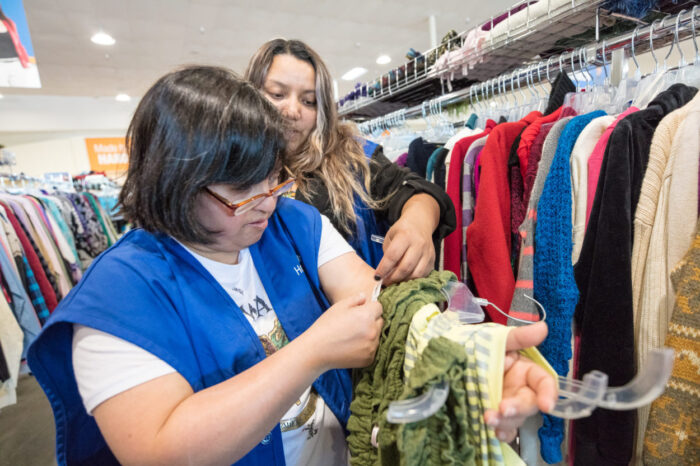
The saying “what’s old is new again” is a popular phrase to encourage reuse, and it’s the perfect attitude to have when thrift shopping. However, if your digital content is outdated or could use a new life, it can do your online thrift store more harm than good. So how do you make your digital marketing efforts new again? Here are some tips.
1. Promote Your Best Thrift Store Products
Thrift stores are unique in that they offer a specially curated selection of many one-of-a-kind products rather than a large inventory of items that can be purchased in multiples. Part of the thrill of thrifting is the hunt, but customers need to be enticed to want to browse.
When customers visit a new thrift shop, they only take a few moments to evaluate the store and decide whether to continue browsing. A great thrift store should offer a wide selection of high-quality merchandise, but only the highlights of your inventory will hook buyers from the outset. Look for items that are clean, in good condition, and priced reasonably.
It’s wise to use thrift store inventory management to keep track of all the items that are available and which items you could display next. This specialized software includes tools that make it easy to sort through your selection by condition, price, availability and even integration with marketing tools so you can easily promote your best products in the places it will count.
2. Communicate with Customers

Diehard thrifters know the benefits of shopping secondhand. Thrift stores benefit from the individual nature of their products, and regular thrifters tend to have more than just a good deal in mind when they shop.
Once customers find a store they like, they’re not just counting on a stellar shopping experience. Because of the nature of your inventory, they’re also counting on a uniquely personal experience, too. Friendly and helpful communication can make a big difference in how your customers feel when visiting your business. Whether answering emails or responding to comments on social media posts, demonstrate your extensive knowledge about the merchandise and willingness to help your customers find what they’re looking for.
In today’s digital age, having a strong online presence is important for any business, including thrift stores. This can do a lot for your customer service, too. If your store maintains an online presence, such as a website or social media pages, to keep up-to-date on new arrivals and promotions and broadcast this to your wider audience.
3. Maintain and Advertise Fair Pricing
Thrift stores are subject to market standards like any other industry. Thrift stores are known for offering great deals, but the definition of a good deal can shift due to trends and market fluctuations. It’s important to carefully evaluate prices and price changes on items you sell so you can offer the best pricing. Customers will know you know your stuff if you provide some context for how you’ve priced your items. Let your customers know that you do your research by offering information on the original price, history information or details on each item’s value and why it’s priced the way it is.
Keep in mind that you may benefit from building in different pricing structures for your items. For example, you may have several prices on one item that apply on different dates, so the item could become cheaper the longer it is in the store. Examine each tag closely for the best deal.
4. Prioritize the User Experience

A thrift store, whether it’s online or in a brick and-mortar, should be well-organized. Sometimes thrift stores get a bad reputation for being messy but seeing clearly marked departments and organized inventory can help your customers have a much more pleasant shopping experience. The easier it is for a customer to find an item based on a variety of search terms or product descriptions, the happier they will be in their search.
Customers also want to know if thrift stores take measures to clean and take care of their inventory. Posts or information pages about how you accomplish this with your own thrift store are important for both customers and your business’s well-being.
Customers want to find a quality shop where they know they’ll have access to a treasure trove of pre-loved items that can find a place in their life. These tips should help you find the right customers and make better connections with the ones you have.
5. Monitor and analyze your results
After implementing digital marketing strategies for your thrift store, it is important to monitor and analyze your results to ensure that you are achieving your goals and making the most of your efforts. One way to do this is by using analytics tools to track the performance of your website and social media accounts. This will give you insights into your audience’s behavior, such as which pages they visit most often, how long they stay on your website, and which social media posts get the most engagement.
By analyzing these metrics, you can make informed decisions about how to optimize your digital marketing strategy. For example, if you notice that your website has a high bounce rate on certain pages, you can investigate why and make improvements to increase engagement. Additionally, by analyzing your social media performance, you can determine which types of content and messaging resonate most with your audience and adjust your strategy accordingly.
Regularly monitoring and analyzing your results will also allow you to stay up-to-date with changes in your audience’s behavior and preferences. This will help you stay ahead of the curve and adapt your digital marketing strategy to best serve your customers. Overall, monitoring and analyzing your results is a critical step in the digital marketing process that can help you achieve your goals and ensure your thrift store is successful online.

Conclusion
In conclusion, digital marketing has become an essential component for thrift stores to remain competitive and attract a wider audience. By utilizing effective digital marketing strategies such as social media marketing, SEO, email marketing, and monitoring and analyzing results, thrift stores can not only increase their online presence but also drive more foot traffic to their physical stores. It’s important to remember to maintain consistency across all digital platforms, create engaging content that resonates with your target audience, and always stay up-to-date with the latest digital marketing trends and best practices. By implementing these tips, thrift stores can establish a strong online presence, connect with their customers, and ultimately increase their revenue.
















